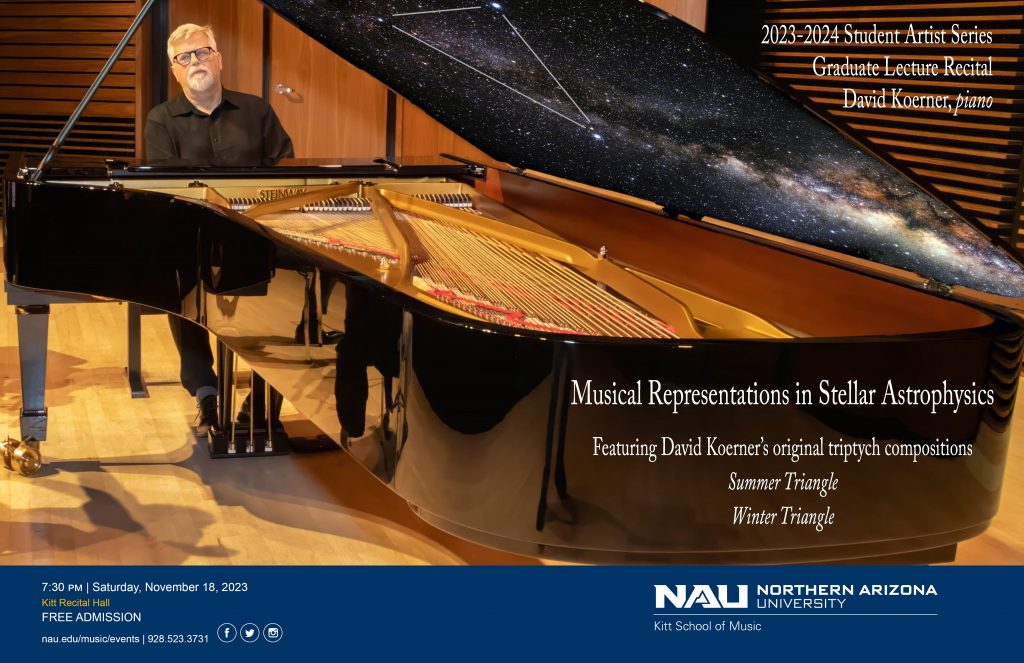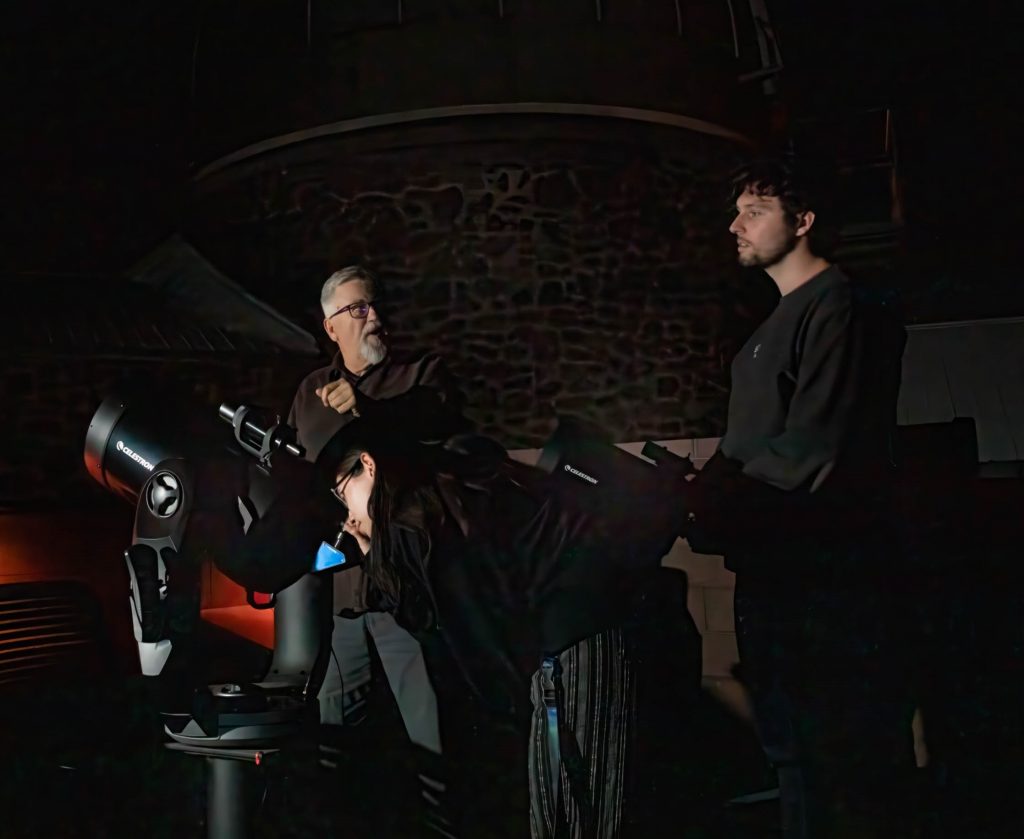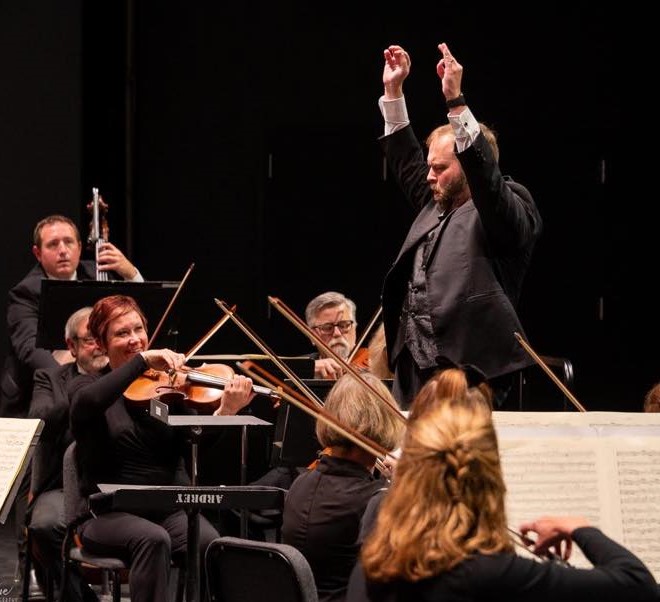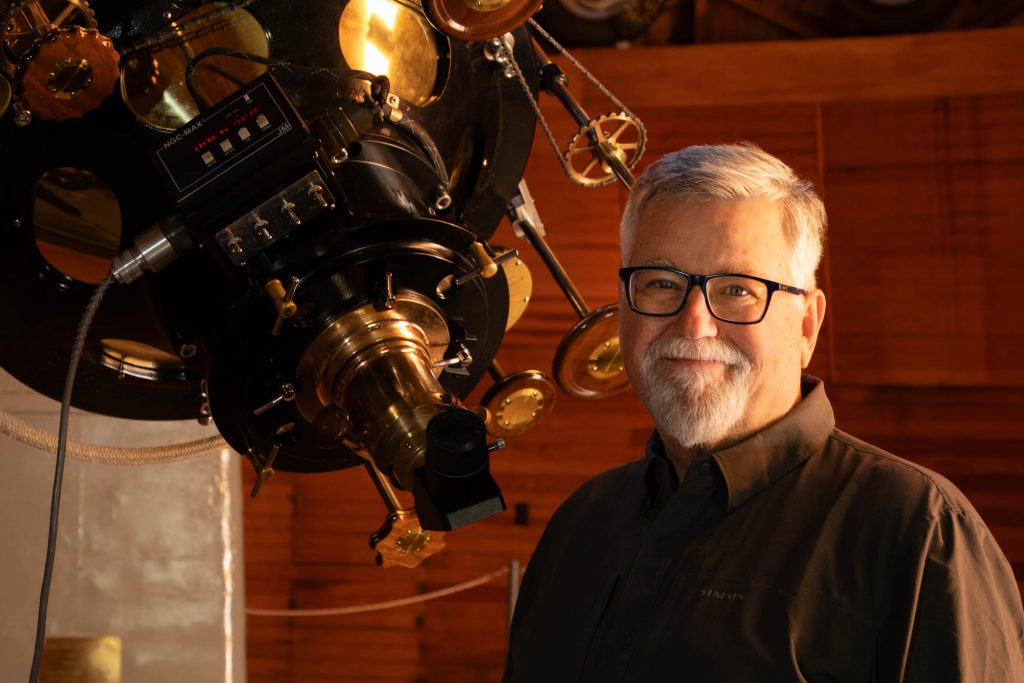Many people have rafted through the Grand Canyon. How many have done it with a string quartet? David Koerner has. An emeritus professor of astronomy, Koerner also is finishing a graduate certificate in piano performance and has a master’s degree in instrumental performance for the viola. He’s combining his two loves with his new appointment: astronomer in residence at the Grand Canyon.
What brought you to NAU?
I came to NAU in 2002 from the University of Pennsylvania in Philadelphia, where I was a professor in physics and astronomy after working at NASA’s Jet Propulsion Laboratory and Caltech. I had always wanted to live on the Colorado Plateau, and NAU provided such an opportunity. When there was an open position, I applied and was a professor here from 2002 to 2020, after which I retired as an emeritus professor. Along the way I obtained a master’s of music degree in instrumental performance (violin/viola) and am currently finishing a graduate certificate in instrumental performance (piano). I’m also on staff as a collaborative performer (piano).
How were you selected to be the astronomer of residence at the Grand Canyon?
Proposals are reviewed by committee in association with the Grand Canyon Conservancy. These are evaluated according to their merit in supporting the park’s status as an International Dark Sky Park. I proposed a combination of public outreach talks and astronomy-related musical performance. The program mirrors the Grand Canyon Artist in Residency program, so artistic efforts are also considered. I was fortunate to feel confident proposing in both areas. My themed message is “Deep Time in Earth and Sky.”

My residency is not scheduled until Fall 2024, but here’s what’s planned: I will spend two weeks at the North Rim in late September giving public talks and concerts related to the lives of stars and planets and will also spend time editing a book on those subjects. I will have a telescope on site to assist in guided night sky tours for visitors. After two weeks, I will move to South Rim for four more weeks and stay in the apartment above the Verkamp’s Visitor Center (with a balcony view of the canyon!). I will repeat and expand on the programs presented at North Rim. I’m also hoping to move my Steinway concert grand piano into the Shrine of the Ages building where the Grand Canyon Music Festival is held. I’m previewing a lecture/concert that I might play there at NAU in Kitt Recital Hall at 7:30 p.m. on Nov. 18. The topic is bright star asterisms visible in summer and winter.
Why did you decide to go to grad school in music? What are you studying?
I grew up playing violin and piano and was a professional pianist for more than a decade before I went into science. As I approached retirement, I felt a strong impulse to reclaim my musical life. At about this time I was invited by a childhood friend, now professional violinist with Seattle Symphony, to join a 15-day string quartet raft trip down the Grand Canyon. It took me awhile to regain my violin “chops” and, when the raft trip was done, I very much wanted to continue playing, so I enrolled in the M.M. program studying viola and violin. After retirement, I wanted to reclaim my earlier piano skills and enrolled in the graduate certificate program where I study piano and composition. I write musical works that represent natural processes in the origin and evolution of Earth and the cosmos in order to help people experience the awesome awareness of our place in an immense field of space and time.

Tell me about a significant childhood memory and how it has impacted your life today.
A childhood viewing of Disney’s 1940 Fantasia—the “Rite of Spring” in particular—affected me profoundly. Its animated depiction of the origin of Earth and evolution of life (volcanoes and dinosaurs!) was in stark contrast to the one-week creation of a young Earth that I had been taught in another sphere. The music is still a go-to favorite and heavily influences the style in which I compose. The story line led to a career in planetary science where I have done observational research in planet formation and taught astrobiology for 25 years.
What did you want to be when you grew up?
Musician and astronomer
What have you been most proud of recently?
Learning to compose.
What is your favorite way to spend a day off?

A Grand Canyon hike!
What are three things on your bucket list?
- Bringing music and science talks to national parks and rural areas on the Colorado Plateau, including those with inspiring land- and skyscapes.
- Building a recording studio near Grand Canyon and recording Earth- and sky-related music for easy online access.
- Finishing a trade book for non-specialists interested in learning more about Earth and sky.
Know someone who would make a good profile in Humans of NAU? Email your suggestions to NAUComm@nau.edu.



